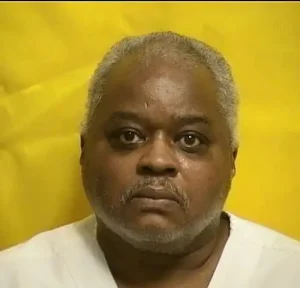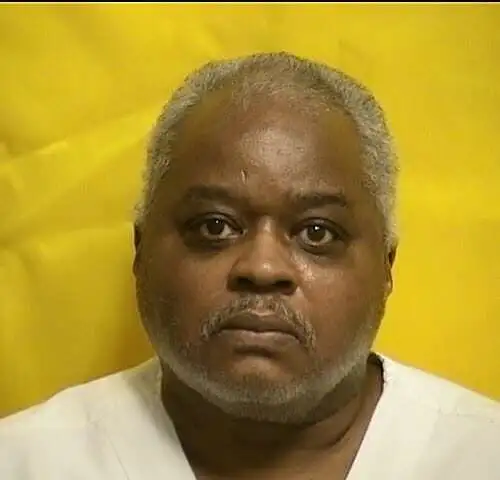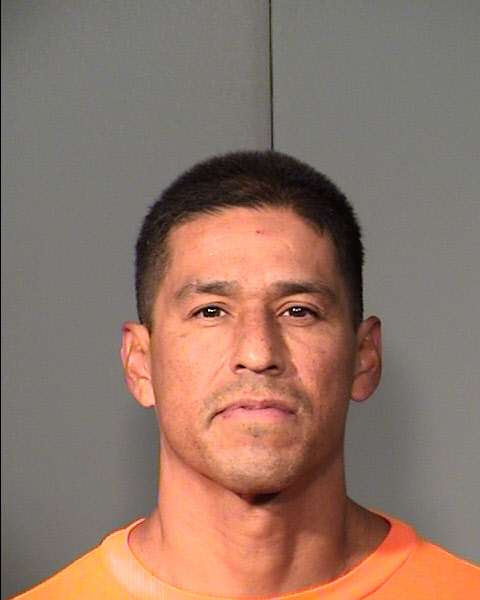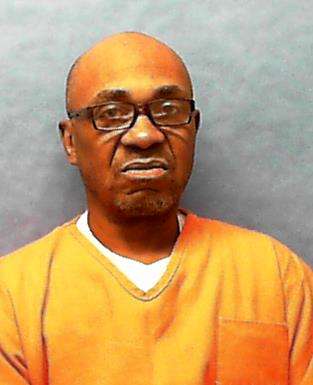Davel Chinn Robbery Murder In Ohio
Davel Chinn was sentenced to death by the State of Ohio for a robbery murder
According to court documents Davel Chinn would rob two men and would shoot and kill one of the men, Brian Jones
Davel Chinn would be arrested, convicted and sentenced to death
Davel Chinn Photos

Davel Chinn FAQ
Where Is Davel Chinn Now
Davel Chinn is incarcerated at Chillicothe Correctional Institution
Davel Chinn Case
On the evening of January 30, 1989, Davel “Tony” Chinn, appellant,
completed a midterm examination at Cambridge Technical Institute in Dayton.
Later that night, fifteen-year-old Marvin Washington saw appellant near
Courthouse Square in downtown Dayton. Washington, who had known appellant
for approximately one year, knew him only by the name of “Tony.” Washington
and appellant spent part of the night drinking beer and loitering around the
downtown area. At some point, appellant showed Washington a .22 caliber nickel-
plated revolver and suggested that they look for someone to rob. At approximately
11:00 p.m., Washington went into an adult bookstore on South Ludlow Street and
was ejected from the store because of his age. Thereafter, Washington and
appellant loitered in the area of South Ludlow Street looking for someone to rob.
Meanwhile, Gary Welborn and Brian Jones had pulled their cars into a
parking lot at the corner of South Ludlow Street and Court Street and had parked
side-by-side in opposite directions to converse with each other through their
driver’s side windows. Appellant and Washington spotted the two men and
decided to rob them.
Washington approached Jones’s vehicle from the rear, and appellant
approached Welborn’s car from the rear. Appellant pulled out a small silver
revolver, pressed it against the side of Welborn’s head, and demanded money.
Welborn saw Washington’s face, but he was unable to see the face of the gunman.
Welborn handed his wallet to Washington, and Jones handed his wallet to the
gunman. According to Welborn, “the guy with the gun said we’d better have at
least a hundred dollars between us or he’d kill us both.” After emptying the
victims’ wallets of money, the two assailants began discussing which car they
wanted to steal. Following a brief discussion, they decided to steal both cars.
Washington got into the driver’s side of Jones’s car and forced Jones into the
passenger’s seat. Appellant instructed Welborn to remain still. As appellant began
walking toward the back of Welborn’s vehicle, Welborn seized the opportunity to
escape. At trial, Welborn testified, “The guy, he comes around. He starts walking
around my car, telling me not to touch my keys. He still has the gun pointed at me.
I watch him in my rearview mirror and sideview mirror. As soon as he gets behind
my car, I ducked down. I thought he was going to kill me now or later anyway so I
ducked down in my car seat, threw it in drive, and took up off [sic] Ludlow the
wrong way, straight to the police station.” Welborn arrived at the station at
approximately 11:30 p.m. and reported the incident to police.
After Welborn had escaped, appellant got into the back seat of Jones’s car
and held the revolver to Jones’s neck while Washington drove the car away from
Dayton and toward an area in Jefferson Township. At some point, appellant
instructed Washington to turn the vehicle around and to pull over to the side of the
road. Washington complied with appellant’s instructions. After Washington had
stopped the car, he leaned forward in the driver’s seat so that appellant could exit
the two-door vehicle from the driver’s side. According to Washington, appellant
got out of the car and walked around to the passenger’s side. Appellant then got
Jones out of the car and shot him. Appellant and Washington drove away from the
scene in Jones’s automobile. While fleeing from the scene, appellant told
Washington that he shot Jones because Jones could have identified them and
because Jones “didn’t have enough money.” Appellant told Washington that he
had shot Jones in the arm
Stacy Ann Dyer lived at 5500 Germantown Pike in Jefferson Township.
Dyer witnessed the shooting but did not see the gunman’s face. Dyer testified that
on January 30, 1989, at approximately 11:30 p.m., she had just arrived home and
was parked in her driveway facing the street. At that time, Dyer saw a black two-
door Chevrolet Cavalier pull off to the side of the road on Germantown Pike. Dyer
observed a man get out of the driver’s side of the vehicle and walk over to the
passenger’s side. She also saw the silhouette of a person exiting the vehicle from
the passenger’s side. The two people then walked to the back of the car. At that
moment, Dyer heard a gunshot and a scream. The victim ran through Dyer’s yard
and fell to the ground in her neighbor’s yard. Dyer then saw the black car speed
away from the scene. Dyer ran inside her house and informed her father and her
sister what had happened. Dyer’s sister called police, and Dyer and her father
went outside to check on the victim. They found the victim, Brian Jones, on his
knees with his face to the ground. Dyer asked the victim whether he was injured,
but Jones did not respond. When police and paramedics arrived at the scene, Jones
was still breathing but was unconscious. He never regained consciousness and was
pronounced dead on arrival at the hospital.
Dr. David M. Smith performed the autopsy. Smith found that Jones had
died as a result of a massive acute hemorrhage due to a gunshot wound to his arm
and chest. Smith found that the projectile had entered through Jones’s left arm,
had proceeded directly into Jones’s chest, and had perforated the main pulmonary
artery. Smith recovered the .22 caliber lead projectile from an area near the base of
Jones’s heart. Carl H. Haemmerle, an expert in firearms, examined the .22 caliber
projectile and determined that it had been fired from a revolver. He also examined
the sweatshirt that Jones had been wearing at the time of the shooting. Evidence
revealed that the muzzle of the weapon had been in direct contact with the garment
at the time the shot was fired.
4
Following the shooting, Washington and appellant drove in Jones’s car to
5213 Lome Avenue in Dayton. There, Washington introduced appellant to
Christopher “Bay” Ward.
Ward testified that, on January 31, 1989, at approximately 12:30 or 1:00
a.m., Washington had pulled up to 5213 Lome Avenue in the black Chevrolet
Cavalier and had introduced Ward to a man named “Tony,” who was seated in the
front passenger’s seat. Ward spoke to Washington for approximately thirty to
forty-five minutes until Washington and the man he was with drove away. Later
that night, Washington returned to Lome Avenue and told Ward that “Tony” had
shot someone in Jefferson Township.
On February 5, 1989, police arrested Washington based on information they
had received from Ward. Washington confessed to police and named Tony as the
killer. However, Washington was unable to give police the suspect’s last name and
address. On February 7, Washington helped police prepare a composite sketch of
Tony. Later, after police had nearly exhausted all leads in their search for Tony,
the composite sketch was released to the news media. On Wednesday, February
22, 1989, a Dayton area newspaper printed the composite sketch along with an
article indicating that the suspect’s name was Tony.
Shirley Ann Cox worked as a receptionist in her husband’s law office. On
Thursday, February 23, two men walked into the office. One of the men identified
himself as Tony Chinn and requested to see Cox’s husband. Cox informed the
man that her husband was not available. That night, while Cox was reading the
previous day’s newspaper, she saw the composite sketch of the suspected killer.
She said to her husband, “My God, I don’t believe this.” “This Tony Chinn that
was in [the office] this morning is in the paper.” On Friday, February 24, Cox
called police to inform them that she had seen the suspect and that his name was
Tony Chinn.
5
After speaking to Cox, police obtained a photograph of appellant and placed
it in a photo array with the pictures of five other men. On February 24, police
showed the photo array to Washington and to Ward. Washington positively
identified appellant as the killer. Additionally, Ward identified appellant as the
man he had seen in the passenger’s seat of the victim’s car — the man Washington
had referred to as “Tony.” That same day, on February 24, police arrested
appellant in connection with the murder.
On February 27, police conducted a lineup. Washington, Ward, Cox, Dyer,
and Welborn all viewed the lineup. Dyer and Welborn could not identify
appellant. Welborn attempted to make a selection based on the voices of the
subjects but chose someone other than appellant. Ward and Cox were able to
positively identify appellant. Washington initially indicated that the killer was not
in the lineup. However, after leaving the room where the lineup was conducted,
Washington summoned Detective David Lantz into an interview room and told
him that number seven in the lineup (appellant) was the killer. Washington
explained to the detective that he had previously indicated that appellant was not in
the lineup out of fear that appellant was able to see him through the screen in the
room where the lineup was conducted.
In March 1989, appellant was indicted by the Montgomery County Grand
Jury for the aggravated murder of Jones. Count One of the indictment charged
appellant with purposely causing the death of Jones during the commission of an
aggravated robbery. Count One of the indictment also carried three death penalty
specifications: one alleging that the offense was committed for the purpose of
escaping detection, apprehension, trial, or punishment for another offense (R.C.
2929.04[A][3]), a second alleging that the offense was committed during the
course of aggravated robbery (R.C. 2929.04[A][7]), and a third alleging that the
offense was committed during the course of kidnapping (R.C. 2929.04[A][7]).
6
Appellant was also indicted on three counts of aggravated robbery (Counts Two,
Four, and Five), one count of kidnapping (Count Three), and one count of
abduction (Count Six). Each count of the indictment also carried a firearm
specification. Additionally, Counts Two through Six each carried a specification
alleging that appellant had previously been convicted of robbery
https://www.supremecourt.ohio.gov/rod/docs/pdf/0/1999/1999-ohio-288.pdf














